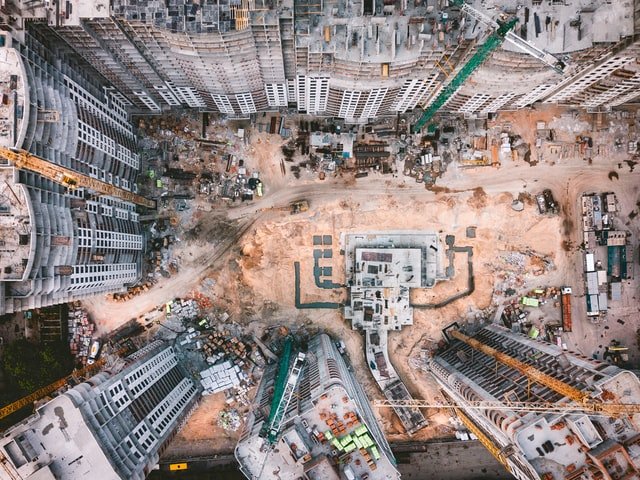Infrastructure is the backbone of a country’s economy, providing good railway systems, water tunnels, electricity, and an efficient transport system. Infrastructural projects tend to be capital-intensive, with long-term returns on investment. Economic infrastructure mainly involves public goods.
A public good is a product or commodity the government offers for the betterment of the entire community. In most cases, public goods are paid for through tax policies and benefit society, but they have one main problem: “the free-rider challenge”. The free-rider challenge involves some community members not paying for the infrastructure, despite using it. For example, a member of society may find ways to not pay taxes despite using a public road.
Despite its drawbacks, infrastructure projects are generally beneficial for everyone. Here are some common types of infrastructure development projects, and some common challenges associated with building them.
Types of infrastructure development
Infrastructure development sees the construction of essential services, such as roads and railway systems, to spur economic growth, increase quality of life for residents, and enable a country to be more competitive and efficient. Some of the examples of infrastructure development include the following.
Aviation infrastructure
An example of an aviation project is developing a 2.25-mile automated people mover rail system. The system is currently being developed at the Los Angeles International Airport and will be completed in 2023. The project will include six terminal stations and cost 4.9 billion dollars.
Bridge infrastructure
The United States often builds many types of bridges, including arch, suspension, and truss bridges. According to the American Road and Transmission Builders Association, more than 54,000 bridges in the country require upgrading. Bridges are important because they help people quickly move from one (usually otherwise inaccessible) location to another.
Power and energy infrastructure
Energy infrastructure projects deal with projects that involve power, such as power grids and electrical lines. The U.S. has more than 160,000 miles of power lines that power over 145 million homes.
Road infrastructure
Road infrastructure is intended to connect neighborhoods and cities with one another to ensure the free and easy movement of goods and people. This infrastructure is also crucial because it helps spur economic growth and open up rural areas.
Other infrastructure
Other types of infrastructure worth mentioning include railroad infrastructure and water infrastructure.
5 primary challenges of infrastructure development
Despite the advantages these infrastructural developments bring, numerous challenges affect these projects.
1. Project complexity
Several factors can make an infrastructural project complex. One of these factors is the site location—for example, when you have to build a railway system in a mountainous region. Another factor is the type of equipment required and the technological needs of the project.
When working on a complex project, you’ll need to use technology. An example of a technology created for complex infrastructural projects is https://www.alicetechnologies.com/solutions/for-infrastructure. ALICE is a construction optioneering platform created to reduce risks and save time and money. This technology suits contractors building railway lines, tunnels, and road infrastructure.
2. Lack of sufficient labor
According to McKinsey, the construction industry in America is currently facing labor shortages. In October of last year, there were more than 402,000 unfilled job positions in the construction sector. Some construction projects have been delayed as a result, and it’s become more expensive to implement infrastructure projects in some areas.
One reason for labor shortages in this sector is younger generations preferring less labor intensive jobs. Companies can solve this problem by implementing things like using 3D printers to create construction parts in the factory and then assemble them on the construction site.
3. Poor feasibility studies
Large infrastructural projects are usually victims of poor feasibility studies due to the numerous conflicts of interest. A good example is when an infrastructural development project is built not because of a need, but because of political interests.
As a result, some infrastructural projects consume billions of taxpayer’s money without any tangible return on investment. Apart from political interest, feasibility studies are also affected by the lack of accurate data from reliable sources. Study recommendations are usually skewed, which wastes taxpayers’ money.
4. Poor costing strategies
It’s not uncommon for infrastructural development projects to be affected by cost overruns. A cost overrun is an unexpected change in the overall construction budget due to external factors that had not been identified earlier. Because cost overruns increase total project costs, it increases the risk of a project stalling.
Cost overruns can be caused by several factors, such as change orders and unforeseen risks, including spending more money on the foundation. Another factor that can cause cost overruns is inflation or government policy that increases the cost of imports.
In other projects, development costs can be underestimated. This mainly happens when the contractor wants to win a competitive government contract at all costs. Underestimating prices causes projects to stall, increasing the cost of development.
To solve this problem, use a modern budgeting solution with the ability to detect cost overruns before they affect the entire project. These systems should also be able to create several simulations to find the best construction approach to save on labor and construction costs.
Also read: What to know before hiring a steel supplier for construction purposes?
5. Poor risk mitigation strategies
Large infrastructural projects are usually affected by inadequate risk mitigation strategies. This is because project managers will always consider long-term risks, but ignore short-term risks. As a result, short-term risks tend to delay the successful implementation of a project.
The solution to this strategy is to identify risks based on milestones and have a mitigation measure in place. Contractors should use advanced technology to identify alternatives or options that can be used in case risk occurs.
